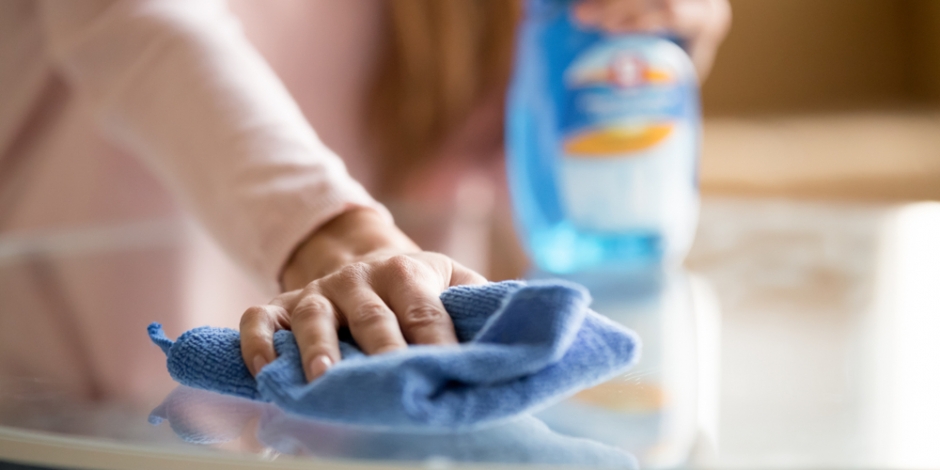
It often takes events that happen outside the home and even far away to inspire us to consider the air we breathe inside our homes. Things like wildfires in the west, increased seasonal allergens in the air, holiday traffic, heat waves, and more, can have New Yorkers just like you looking for fresh, clean air inside the safety of your house.
However, it’s often the everyday habits and activities inside your home that more significantly affect your overall indoor air quality (IAQ), and trigger symptoms like asthma and allergies. Here are the things you should know about keeping your air clean, and which activities can decrease your IAQ.
Why Indoor Air is More Contaminated Than Outdoor Air
Are you one to go inside when you need to escape the seemingly polluted outside air? You might not be getting the result you are looking for! The Environmental Protection Agency estimates that indoor air is at least two to five times more contaminated than the air outside, and in some cases, can be as high as 100 times more contaminated.
The reason for this is relatively straightforward: particles and contaminants can easily enter your home, but it is really hard to get them out. Because of this, contaminants accumulate over time, and then have multiple chances to be inhaled by you and your family members. At Healthy Home Energy & Consulting, we solve this problem by “air sealing tight, and ventilating right!”
Common Indoor Air Pollutants
These are the most common contaminants that can accumulate in your living space, especially here in Westchester, lower Putnam, and Fairfield Counties:
Volatile Organic Compounds (VOCs)
VOCs can come from things like paint, glue, cleaners, and chemicals, but they can also come from construction materials like wood and carpeting. Even mold gives off organic VOCs, which can cause a house to smell musty!
Dirt & Dust
Not only will dust and dirt enter your home through the open doors, windows, and hidden air leaks, it can also enter your home through your central heating and cooling system. Ductwork is notorious for leaks, and the air rushing through your ductwork will attract the dust sitting in your unfinished spaces, like the crawlspace and the attic.
Allergens and Other Air Pollutants
Other types of contaminants that are common in New York homes are allergens, like pet dander and pollen, as well as other toxic substances like radon and carbon monoxide.
Indoor Activities that Affect Air Quality
If you are looking for ways to reduce the dust in your home and keep your indoor air healthy, a little strategy around the following activities will most certainly help:
Cleaning
Take note of any of the chemicals you use to clean and try and use all-natural or organic cleaners when possible. Vacuuming can also kick up the contaminants and particulate matter in your carpeting, affecting your IAQ.
Tip from the pros: turn on your bathroom fans and wear a mask and gloves while cleaning.
Cooking
Does cooking harm indoor air quality? It certainly can! The heat required for cooking releases particles into your breathing air, where it will be recirculated over time. This includes particles from the food being cooked, but also particles from the act of cooking itself — combustion appliances like a gas oven range can release harmful byproducts like carbon, and carbon monoxide.
Tip from the pros: Run your oven range hood for 30 minutes after cooking.
Showering
While the chemicals in your shampoos and soaps can release harmful particles into the air, one of the blogger concerns is all of the steam and moisture! The more humidity in your home, the greater the risk of mold growth. Running your bathroom fan will help keep your indoor moisture at bay, but only if your bathroom fan vents to the outside. If your bathroom fan only vents into the attic, you may have moisture issues in your attic!
Tip from the pros: Always use your bathroom fan when bathing or showering, and ensure your bathroom fan vents to the outside.
Indoor Gardening
This may come as a surprise, but the carbon-absorbing qualities of household plants are often not enough to overcome the increased risk of mold growth. The soil used for indoor plants is a feeding ground for mold, and each time you water your plants you introduce more moisture into the equation.
Tip from the pros: Regularly replace the soil in your indoor pots to keep mold from growing.
Breathe Easier in a Healthy Home this Winter
In the Northeast, we tend to spend a lot more time indoors in the winter months than we do in the spring or summer. As a result, we also spend more time breathing our indoor air, so it’s smart to boost your IAQ before winter is in full swing.
Healthy Home Energy & Consulting can help assess your air through an indoor air quality test. Then, we can locate where your IAQ issues are coming from using a Whole Home Evaluation, and recommend the right upgrades to improve your home health. Upgrades can include:
Ventilation
Insulation
Air sealing
Crawlspace upgrades

